Introduction: Why Smart Investors Still Trust the 60/40 Portfolio
In a world of volatile markets, crypto swings, and global uncertainty, one question remains timeless: How should you balance your investments to grow steadily—without losing sleep?
That’s where the 60/40 portfolio rule comes in — a strategy that has stood the test of time for over half a century. Whether you’re a new investor or managing a ₹10 lakh portfolio, this rule gives you a stable mix of growth and safety.
But how does it actually work in 2025, when inflation, AI stocks, and new-age ETFs are reshaping markets? Let’s decode it in a way that’s easy, insightful, and profitable.
1. What is the 60/40 Portfolio Rule?
The 60/40 rule simply divides your portfolio into:
- 60% in equities (stocks or mutual funds) for growth
- 40% in bonds (debt or fixed-income instruments) for stability
This mix is designed to capture equity market gains while providing downside protection through bonds.
It’s like driving with one foot on the accelerator (stocks) and the other lightly on the brake (bonds).
Table 1: Classic 60/40 Portfolio Composition Example (2025)
| Asset Class | Allocation | Example Instruments | Risk Level | Expected Annual Return |
|---|---|---|---|---|
| Equity (Stocks/Mutual Funds) | 60% | Nifty 50, S&P 500 ETFs, Blue-Chip Stocks | Moderate-High | 10–14% |
| Bonds (Debt Funds, G-Secs) | 40% | RBI Bonds, Bharat Bond ETF, Corporate Bonds | Low | 6–7% |
2. Why the 60/40 Rule Became the “Golden Ratio” of Investing
The origin of the 60/40 portfolio dates back to the 1950s, pioneered by financial advisors like Harry Markowitz under the “Modern Portfolio Theory.” The goal was simple: maximize returns for a given level of risk.
- The 60/40 split became iconic because:
- It performed consistently across decades.
- It protected investors during recessions.
- It captured stock market recoveries quickly.
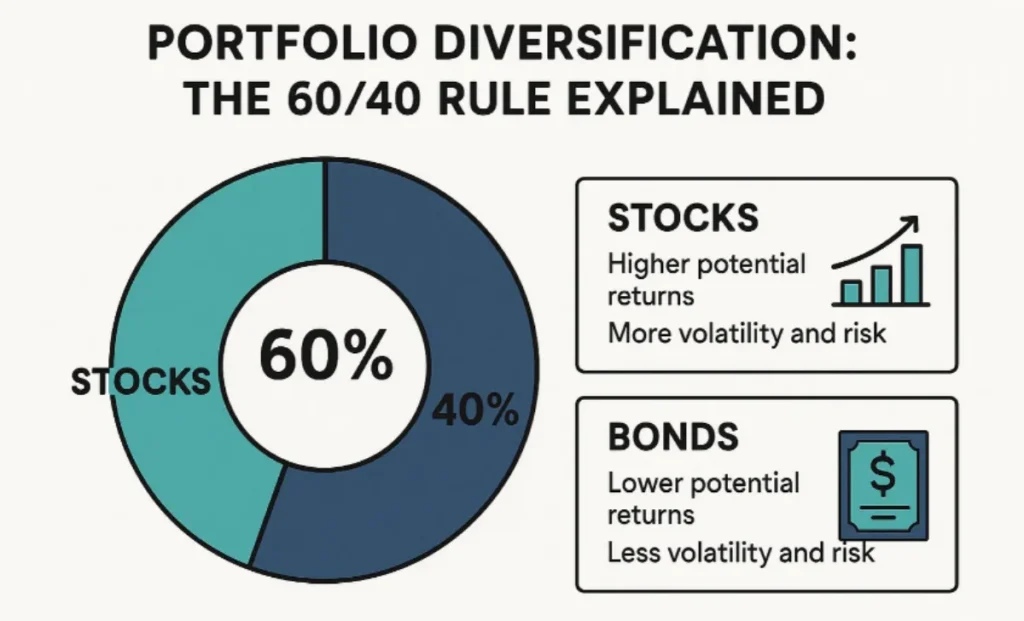
For example, during the 2008 financial crisis, a 60/40 investor recovered losses 2 years faster than an all-stock investor.
Table 2: 60/40 Portfolio Historical Returns vs All-Equity Portfolios
| Period | 100% Equity Return | 60/40 Portfolio Return | Difference |
|---|---|---|---|
| 2008–2010 | -38% | -22% | 16% higher stability |
| 2010–2015 | 15% p.a. | 11% p.a. | Lower risk, steady growth |
| 2020–2024 | 12% p.a. | 9% p.a. | Balanced during volatility |
3. The Modern Twist: 60/40 in the Age of AI and Inflation
Fast-forward to 2025 — the traditional 60/40 mix is evolving. Inflation, rising interest rates, and AI-driven equity rallies have changed asset dynamics.
Stocks are more volatile but offer higher growth, while bonds now provide improved yields after recent rate hikes.
That means:
The 60/40 rule is not outdated — it just needs a 2025 refresh.
Today’s smart investors are tweaking their portfolios into:
- 55/35/10 (with 10% in alternatives like gold, REITs, or ETFs)
- 60/30/10 (adding crypto or innovation funds)
Also Releted: Stop Losing Money! How to Boost Your Portfolio by 25% with 5 High-Return Stocks
Table 3: Updated 60/40 Alternatives for 2025 and Beyond
| Strategy Type | Equities | Bonds | Alternatives (Gold, REITs, Crypto) | Expected CAGR |
|---|---|---|---|---|
| Traditional | 60% | 40% | 0% | 9–10% |
| Diversified | 55% | 35% | 10% | 10–11% |
| Aggressive | 60% | 30% | 10% | 11–13% |
| Defensive | 50% | 45% | 5% | 8–9% |
4. How to Build a 60/40 Portfolio (Step-by-Step for Indian Investors)
Building your diversified portfolio doesn’t require a financial degree. Here’s a simple guide tailored for 2025:
Step 1: Define Your Goal
Ask: What do you want to achieve — wealth creation, retirement planning, or stable income?
Step 2: Choose Growth Assets (60%)
Select top-performing mutual funds, ETFs, or blue-chip stocks.
- Examples: Nifty 50 Index Fund, HDFC Flexi Cap, ICICI Bluechip Fund.
Step 3: Pick Stability Assets (40%)
Include government bonds, corporate debt, or RBI savings bonds.
- Examples: Bharat Bond ETF, SBI Magnum Income Fund, Treasury Bills.
Step 4: Rebalance Every Year
If stocks outperform, your equity weight might rise to 70%. Rebalance by selling some equity and buying bonds to maintain the 60/40 balance.
Table 4: Sample 60/40 Portfolio for ₹10 Lakh (2025 Example)
| Asset Type | Investment | Example | 1-Year Return (2024–25) |
|---|---|---|---|
| Equity Funds | ₹6,00,000 | HDFC Flexi Cap Fund | 13.2% |
| Bond Funds | ₹4,00,000 | Bharat Bond ETF | 6.5% |
| Total Portfolio Return | ₹10,00,000 | — | 10.5% Average |
5. Pros and Cons of the 60/40 Strategy
Advantages
- Balanced growth and safety
- Reduces emotional decision-making
- Suitable for long-term wealth creation
- Easy to manage and rebalance
Disadvantages
- Lower returns in bull markets
- Requires annual rebalancing
- Inflation can erode bond returns
Table 5: 60/40 Strategy Risk-Return Comparison (2025 Forecast)
| Portfolio Type | Risk Level | 5-Year CAGR | Volatility | Ideal For |
|---|---|---|---|---|
| 100% Equity | High | 13.5% | High | Aggressive Investors |
| 60/40 Mix | Moderate | 10.8% | Moderate | Balanced Investors |
| 100% Bonds | Low | 6.2% | Very Low | Conservative Investors |
6. The 60/40 Rule in India: Real-World Example
Let’s take an investor — Rohan, 32, from Mumbai.
He invested ₹12 lakh in 2020 using the 60/40 approach:
- ₹7.2 lakh in equity funds (60%)
- ₹4.8 lakh in bond ETFs (40%)
By 2025, his portfolio grew to ₹18.5 lakh — an average return of 10.8% per year with minimal volatility.
If Rohan had gone all-in on equities, he might have earned 13% — but faced bigger drawdowns during the 2022 correction.
This demonstrates the power of risk-adjusted returns.
Table 6: Rohan’s Portfolio Growth (2020–2025)
| Year | Equity Value | Bond Value | Total Portfolio | Annual Return |
|---|---|---|---|---|
| 2020 | ₹7.2L | ₹4.8L | ₹12L | — |
| 2021 | ₹8.3L | ₹5.1L | ₹13.4L | 11.6% |
| 2022 | ₹8.0L | ₹5.3L | ₹13.3L | -0.7% |
| 2023 | ₹9.2L | ₹5.5L | ₹14.7L | 10.5% |
| 2024 | ₹10.5L | ₹5.8L | ₹16.3L | 10.9% |
| 2025 | ₹11.5L | ₹7.0L | ₹18.5L | 13.5% |
7. How to Adapt the 60/40 Rule for the Future (2025–2030)
The world of finance is changing rapidly — AI investing, green bonds, and global ETFs are shaping the next decade.
Experts recommend adapting the 60/40 rule by:
- Adding 5–10% exposure to ESG or Innovation ETFs.
- Shifting bond allocation to short-duration funds in high-rate environments.
- Using robo-advisors for automated rebalancing and tax efficiency.
According to Morningstar (2025), a modern 60/40 portfolio is expected to deliver 9.8–11% annualized returns in the next five years — outperforming gold, PPF, and fixed deposits.
Table 7: Future 60/40 Portfolio vs Other Assets (2025–2030 Projection)
| Investment Option | Expected 5-Year CAGR | Risk | Liquidity | Recommended For |
|---|---|---|---|---|
| 60/40 Portfolio | 10.5% | Medium | High | Balanced Investors |
| PPF | 7.1% | Low | Low | Risk-Averse Savers |
| NPS | 9.5% | Medium | Moderate | Long-Term Planners |
| Gold ETF | 8.0% | Medium | High | Inflation Hedge |
| Real Estate | 9.0% | High | Low | Long-Term Investors |
8. Expert Opinions: Why 60/40 Still Works in 2025
“The 60/40 rule remains the cornerstone of balanced investing. It’s not about chasing maximum returns — it’s about optimizing outcomes under uncertainty.”
— Radhika Gupta, CEO, Edelweiss AMC
“With rising bond yields and strong equity fundamentals, the 60/40 mix offers a perfect hedge for 2025 investors.”
— Nilesh Shah, MD, Kotak AMC
These insights highlight that diversification isn’t dead — it’s evolving intelligently.
9. Common Mistakes to Avoid
- Even a great strategy can fail if applied wrongly. Avoid these mistakes:
- Ignoring portfolio rebalancing
- Overloading on risky small-cap stocks
- Investing in low-quality bonds
- Reacting emotionally to market news
Stick to discipline — and your 60/40 portfolio will outperform most DIY investors over the long run.
Table 8: Common Mistakes vs Correct Approach
| Mistake | Impact | Correct Action |
|---|---|---|
| Not rebalancing yearly | Portfolio drift | Review annually |
| Chasing high returns | High volatility | Focus on consistency |
| Ignoring inflation | Reduced real returns | Use short-term bonds |
| Over-diversification | Low performance | Stick to 6–8 funds |
10. Conclusion: 60/40 is Not Old — It’s Evergreen
The 60/40 portfolio isn’t just a number — it’s a philosophy of balance, patience, and smart diversification.
In 2025 and beyond, successful investors won’t be the ones chasing trends but the ones managing risks intelligently.
By following the 60/40 principle — and updating it with modern tools — you can achieve consistent growth, financial stability, and peace of mind.
“Don’t predict markets. Prepare for them — with balance.”
Final Key Takeaways
- The 60/40 rule blends growth (equity) and safety (bonds).
- Ideal for investors seeking 10–11% long-term returns.
- Modernize it with ETFs, ESG, or short-term debt.
- Rebalance yearly to maintain efficiency.
- Perfect for Indian investors planning 2025–2030 goals.





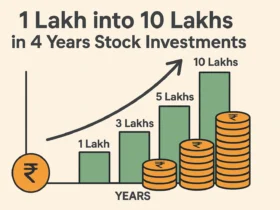













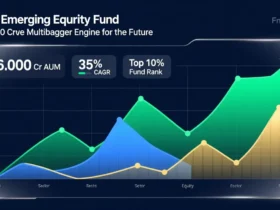
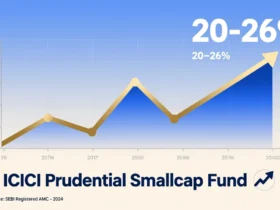


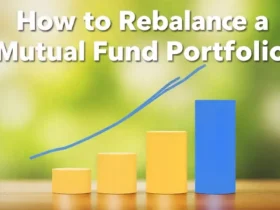
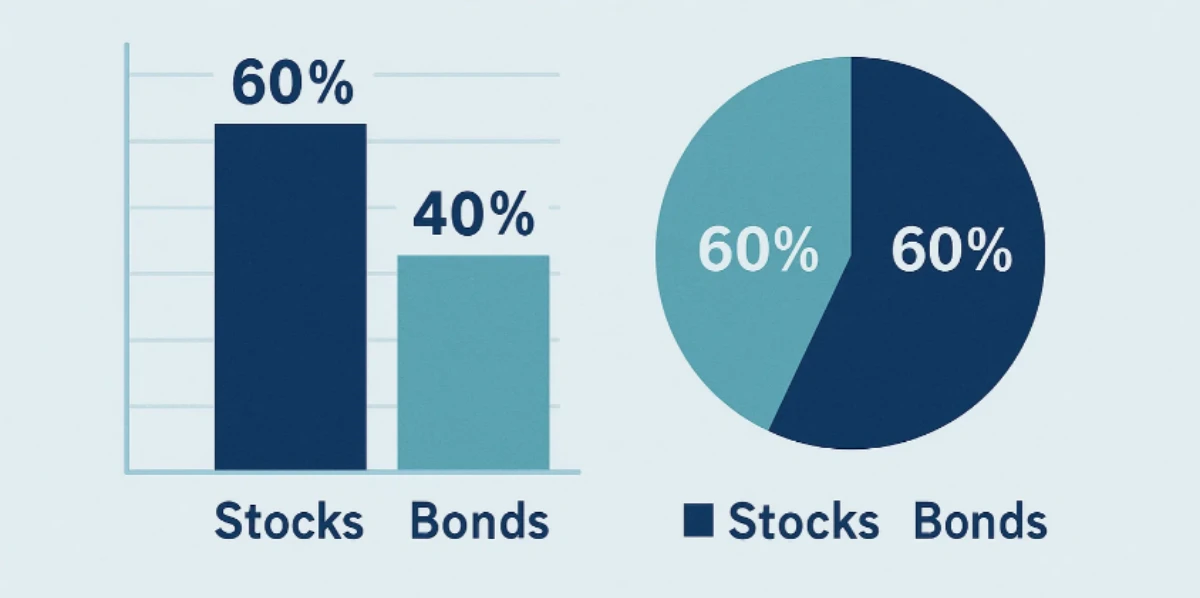




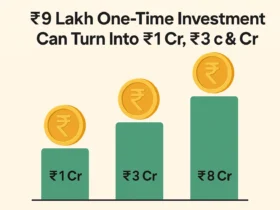


Leave a Reply